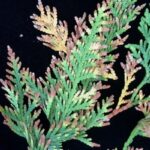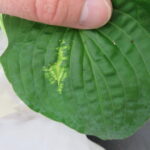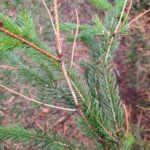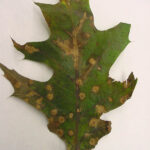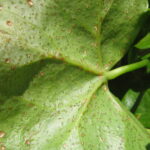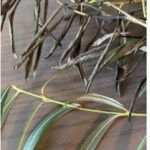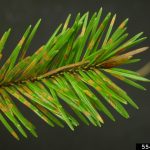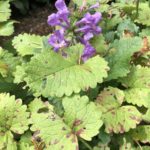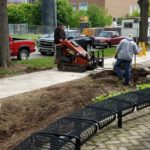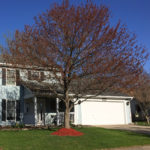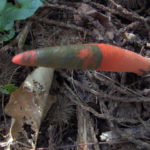We receive a lot of ailing conifers at the Plant and Pest Diagnostic Laboratory each year. We received 870 ornamental plant samples in 2020 and 190 (21.8%) of them were conifers. While arborvitaes (Thuja spp.) do not beat out spruce in the number of samples we receive in a given year, they make up 20% of our conifer samples (39 in total[Read More…]
Tobacco rattle virus (TRV) is a very important pathogen in the ornamental industry. Don’t let the name fool you. Much like Tomato spotted wilt virus and Alfalfa mosaic virus, TRV has a wide host range that includes more than 400 plant species, and is not restricted to Tobacco or vegetables. Plant viruses are named after[Read More…]
We receive a large number of spruce samples each year at the PPDL, with the vast majority being from Colorado blue spruce with needlecast. Many others show lower needle yellowing, which could be associated with nutrient deficiency or root stress. Figure 1 and 2. However we are receiving an increasing number of Norway spruce[Read More…]
Tubakia leaf spot, caused by the fungus Tubakia, is the disease we find more commonly on oak than any other. Throughout the world, there are 11 species of Tubakia known to infect oak, with Tubakia dryina (previously known as Actinopelte dryina) being the most commonly encountered species in our landscapes. Apple, ash, black gum, chestnut,[Read More…]
Do you have a tulip poplar (Liriodendron tulipifera) in your yard and does it look like fall has come early? This is a likely occurrence in the landscape in late summer, especially leading into August. About this time of year leaves on many tulip poplar trees will start to gradually turn yellow before they fall[Read More…]
Plants that experience extremes in soil moisture may develop spots on their leaves, called “oedema” (also spelled “edema”). The spots may first appear as a blister or raised spot, particularly on the undersides of leaves, but may occur on the top side as well as on the stems. Eventually, the blister develops a rust-colored, cork-like[Read More…]
Willows (Salix spp.) can be beautiful additions to the landscape. These iconic trees can be found growing naturally in river bottoms, along ponds, rivers, and streams; all areas with consistently moist soil. In the landscape, where soil moisture is much more variable, willows can be stressed by drought, increasing damage from a number of canker[Read More…]
Many are familiar with Rhizosphaera needlecast of spruce. If you aren’t, please see these two articles by Janna Beckerman and Megan Haas for more information about the disease and it’s management on spruce. The common name for the disease, needlecast, describes the ultimate fate of the needles: they are cast off. Loss of leaves or[Read More…]
Earthworms are not the only wigglers in the soil beneath your feet. Nematodes, microscopic roundworms, can be found in soil across the globe (even Antarctica!) and are often a barometer of soil and environmental health. However, the nematodes we encounter more frequently feed on plants and cause us, as plant stock producers and consumers, a[Read More…]
Day-to-day activities have changed every aspect of businesses throughout the country. The Green Industry is no exception, with changes implemented to maintain safe working environments for employees and their clients while being compliant with the state’s Executive Order. Due to the diversity of services and products that the Green Industry provides, there is no one-size-fits-all[Read More…]
Usage of mulch at the base of trees is a very common and recommended practice to protect the trunk from mower damage, as well as improve root conditions by preventing weed and grass growth in the root zone. Mulch also increases moisture retention in the soil, and improves soil quality as it breaks down over[Read More…]
Hunting for mushrooms is a fun past-time, even if you are not looking for edible fungi to “spice” up your cooking. However, when you see a fungal invader popping up in your lawn or landscape, they tend to be unwelcome inhabitants because they are launching sticky spore masses onto your siding, producing foul odors (Figure[Read More…]
Like anthracnose diseases of other shade trees, sycamore anthracnose is a very common occurrence in the landscape (Figure 1). Symptoms of sycamore anthracnose normally develop as small spots or dead areas centered along the veins of leaves or along leaf margins (Figure 2). Under conducive conditions these spots expand, killing more leaf tissue and causing[Read More…]

